EAMONN DARCY IS making his way across the members bar at Powerscourt Golf club to talk to me about the 1987 Ryder Cup when somebody gets there first.
“Eamonn! I saw you on TV last night, lining up a putt against Ben Crenshaw.”
“Ah, did I make it?”
You bet he did.
It was at Muirfield in ’87 that Darcy wrote himself into the lore of the Ryder Cup, rescuing the faltering Europeans and stemming a rising Sunday tide by beating Ben Crenshaw in their singles match.
Seve Ballesteros holed the winning putt but even Seve said Darcy won it, by thwarting the stirrings of a famous American comeback: Europe took a five-point lead into Sunday’s singles, but a run of four-straight American wins would have seen it wiped out had Darcy not held his nerve.
This was Europe’s first-ever win on American soil, and while Darcy made history he changed the future too, as the Ryder Cup only became truly important when the Americans started losing.
“The Euros danced on Jack Nicklaus’s green”, says golf writer John Feinstein. “That’s when it really first ratcheted up to another level.”
“No, not really”, says Darcy when I ask him if he ever gets tired of being asked about ’87.
“I’d be sick about it if it wasn’t a positive week, but the way things turned out, you don’t mind talking about it because it was history in the making.”
Darcy was an unlikely hero: ’87 was his fourth Ryder Cup and he hadn’t won a point in any of them prior to his singles match with Crenshaw.
Plus, he had a hellish couple of months ensuring he would make the team at all. He needed to finish within the top nine ranking Europeans for the year and spent 10 weeks in ninth place, pushed hard by Sweden’s Mats Lanner.
- For more great storytelling and analysis from our award-winning journalists, join the club at The42 Membership today. Click here to find out more>
The stress of hanging in there gave him an ulcer, and he arrived at the final tournament before the team was picked, the German Open, to find Lanner had posted 62. Darcy nonetheless kept his nerve to squeak into a team captained by Tony Jacklin and featuring the likes of Seve, Jose Maria Olazabal, Nick Faldo, and Bernhard Langer.
“I certainly did not go in with an inferiority complex”, says Darcy. “My swing, for example, is very individual, so if you had a complex about that, you wouldn’t have lasted as long as I have on tour.”
Darcy’s swing was unique and an emblem of his self-assurance. His wasn’t the usual pendulum whip: instead he carved an additional little arc through the air on his upswing; a “flying right elbow.” He believes it’s a legacy of playing hurling growing up in Delgany.
“I was never taught how to play golf. That was the way I swung it. A few guys in America swing it like that now: Matthew Wolff, he hits it a mile. His swing and my swing are so similar. But back in the day they thought I was mad, swinging like that.”
Darcy taught himself how to play golf but his family is nonetheless steeped in the game. His father played the game to a decent level, while his second cousin, Jimmy Martin, played in the 1965 Ryder Cup and won the Carroll’s International before it became known as the Irish Open.
His grand-uncle Pat Doyle, meanwhile, made the family’s greatest impact in America until Eamonn strode out at Muirfield. He emigrated to the US in 1912, at the second attempt: he was supposed to be aboard the Titanic, but miraculously missed his connection to Cobh. Doyle played in the 1913 US Open at Brookline – the first to be won by an amateur – and also made his name as a coach, giving lessons to Joe Louis and President William Howard Taft.
Darcy remembers a write-up in the American press of his grand-uncle, beneath the headline, “The Forgotten Irishman.” Doyle won once on the PGA Tour – the Philadelphia Open Championship in 1918 – and 57 years later, his grand-nephew made his Ryder Cup bow in the same state.
That was back in the days the American opposition was limited to Britain and Ireland, and a US team featuring Nicklaus, Sam Snead, and Lee Trevino and captained by Arnold Palmer swept to an easy victory.
Darcy played again two years later at Royal Lytham: he shot a 66 but lost his singles match to Hubert Green on the final hole, and the US won the competition by five points. He missed the first edition extended to Europe but was back in 1981, a nine-point hammering for Europe which was rounded out by Darcy’s 5&3 defeat to Nicklaus in the final singles match.
He then missed out on the narrow one-point European defeat in ’83 and the historic triumph at the Belfry in ’85, but held off Lanner to earn a place for the shot at history at Muirfield.
Nicklaus was captain in ’83 and returned to the role at a Muirfield course he had designed. Determined to make home advantage count, Nicklaus turned the greens into what Darcy describes as “polished marble.”
“All the greens died: he cut them so tight that every morning they went out and sprayed them with green paint. They had gone brown: we were putting on the roots.” (Nicklaus had to bear the considerable cost of having all of the greens torn up and relaid after the event.)
Tony Jacklin was back as European captain and it was a more professional operation than hitherto seen by Darcy: this time the players flew Concorde, rather than being crammed into the back of a plane with the rest of the hour’s Transatlantic passengers.
“Jacklin was a good motivator”, says Darcy. “He wasn’t the best captain, but he was a good motivator and he had been there. He played in America, he knew what it was like. We all felt we would have a chance if we played well.”
Jacklin did make one of the great captaincy decisions at Muirfield, pairing Seve with Jose Maria Olazabal for the first time. The Europeans made a fast start, and the notion they would need any hero come Sunday afternoon looked faintly ridiculous at close of play on Saturday: having swept Friday afternoon’s four balls, they took a five-point lead into Sunday’s singles.
Andy Bean took a point back in the first singles match against Ian Woosnam, but Howard Clark hit back instantly by beating Dan Pohl. Sam Torrance and Larry Mize halved the third match, but then…
Red.
Red.
Red.
Red.
Mark Calcavecchia beat Nick Faldo; Payne Stewart bested Olazabal; Scott Simpson won 2&1 against Jose Rivero; Sandy Lyle was well beaten by Tom Kite.
The lead would be fully swallowed up if Darcy was beaten by Crenshaw.
“I remember somewhere on the course taking a look at the big scoreboard, and it was all going pear-shaped. I was playing against Ben Crenshaw. I knew Ben, nice guy. He had won the Masters three years earlier. They had that point in the bag, that was guaranteed.”
Speak to anyone about the Ryder Cup and the first thing they’ll mention is the atmosphere. At Muirfield, it was roiling.
“I remember walking from the first hole. I hit it to within 10 feet, Ben hit it 30 feet away and holed the putt. I missed it. We were going through this laneway of people – there were thousands of people there – and this guy jumps in front of us. He’s frothing at the mouth and looked 40 stone, and he’s saying, Kill him Ben. Kill him. No prisoners. Kill him.”
Darcy hit a chip shot at 14 and heard the incantation of Miss it. Miss it. Miss it. behind him as he struck it; when a poor shot took a kick off the bank and landed close to the green, some supporters tried to claim the ball had been kicked toward the green by a European supporter.
“I walked off the green and I said to Ben, ‘You know what Ben, you and I could be having a reasonably nice match but for these arseholes following us.’ It actually lifted a bit of pressure off me.”
Darcy seemed to play almost entirely without pressure from the off, matching Seve for the best score on the front nine. Crenshaw, by contrast, was struggling, and broke his putter in frustration walking off the sixth hole. He spent the rest of the match putting with a one-iron.
“He had broken his putter, though I didn’t know he had broken it.
“He was arguably the best putter in the world. He used this little blade putter, called ‘Little Ben’. He seemingly walked off the green having missed a putt, tapped the putter off a cone and the head fell off.
“You cant replace it. So I knew he was putting with a one-iron, I thought that he had missed a couple of putts with his putter so decided he might have had more confidence with this one-iron.
“I didn’t dwell on it. I wasn’t bothered, I was in a bubble. Then I started to hit a couple of bad shots, and I went from three-up after 12 to one-down after 16.”
Golf is a study in daft contrasts: most obviously the vastness of the course versus the size of the ball, but just as important are the game’s capacious hours versus the millisecond it takes for a doubt or negative thought to invade.
Darcy quelled them all. Not easy: the run from 12 to 16 felt a perfect microcosm for the day’s shifting momentum, and what was worse, his was coming against a guy who didn’t even have a putter.
“The crazy thing about it is, if I lose that match, I’d be the guy who lost the Ryder Cup against the guy who broke his putter. Can you imagine that? Can you imagine the slating I would have got?”
But it couldn’t enter his head.
“No. No, no. Jesus, you couldn’t do it. If that had come into your head, you were gone.”
Darcy then rescued 17 to send the match to the final hole.
“I hit a wonderful shot on 17 with a six-iron, over the trees. Ben didn’t really have a shot but went for it, and went over the green and into the bunker, and gave me the hole.
“Then I knew I was going up the last. And the way he played 17, I knew he was feeling the pressure too. It wasn’t just me.
“I went first on 18. I hit a three-wood, and nailed it. Ben used to hit the ball right-to-left, and he overhit with a driver. There was a little stream going up the left-hand side and he went into it…which I wasn’t sorry about.
“Anyway, he took a drop and then hit a fantastic third shot into the bunker, front of the green. I was going in with four-iron, and I hit a wonderful shot, but just too low. It hit the very top of the bunker and trickled down just under the lip.
“Ben was in the front of the bunker. He played out first and hit a great bunker shot, 12 feet under the hole. You couldn’t go past this flag, this green was like polished marble. It was ridiculous, stupid. But because I was so close to the lip, I gave it that little bit extra, and it went six feet past. Ben holed his putt for a five, so I’ve got this putt down the hill.
“I’m not thinking of missing it.
“All I was thinking, ‘Just start this ball rolling.’ Just kiss it. It’s very hard to do – to not really make a stroke – and you could nearly have a fresh-air trying to do it. There was no acceleration in the putter, it’s just a little nudge. Then it started picking up speed as it goes down the hill.
“I’m watching it go down there.
“So I’m watching and watching and watching, it’s turning and turning and turning…and in it goes.
“And the place erupted. Erupted.”
Nicklaus was by the green, and embraced Darcy, telling him he would remember that putt for the rest of his life.
Bernhard Langer halved the next match with Larry Nelson, and then Seve beat Curtis Strange to win the cup for Europe. Afterwards, he was asked how it felt to be the man to win the Ryder Cup.
“No, I didn’t. Darcy holed the winning putt.”
“He said it and he didn’t have to say it”, reflects Darcy.
“I’m very laid-back. There was a guy out there called John Redmond, John used to write for the Press. He said to me, ‘Eamonn, don’t play this down like I know you’re going to. This is so big.’
“He was right.”
Darcy never played in the Ryder Cup again: he missed out by £52 on the ranking list two years later, his decision not to play the German Open backfiring. Even by golf standards, he had a remarkably long career, playing more than 800 tournaments, with almost a hundred top-10s and 22 wins.
Darcy is retired now, but still does corporate work, sharing lessons and stories with guests.
He admits to being disappointed that he has never been involved in a subsequent Ryder Cups as a vice-captain, but this week spent time in Edinburgh, playing golf with Ian Woosnam, Sandy Lyle and few other veterans of ’87.
“I was on a team where I knew the players on the team were better than I was. They were Major winners, so to have been able to contribute such a vital point at the right time was so satisfying.
“It’s part of history that Ryder Cup, isn’t it? The first time we ever won in America.
“And we have done it quite a few times since.”






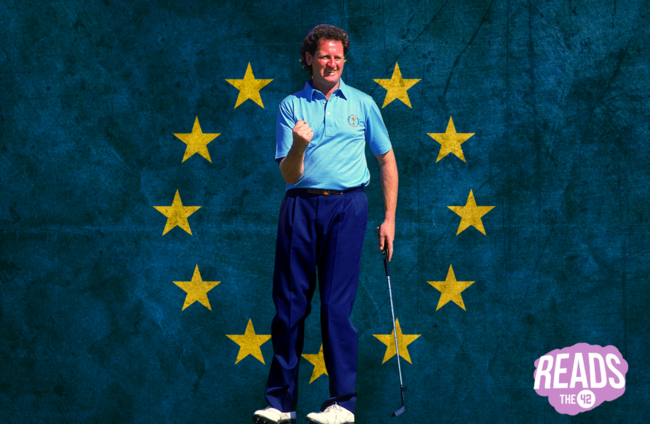
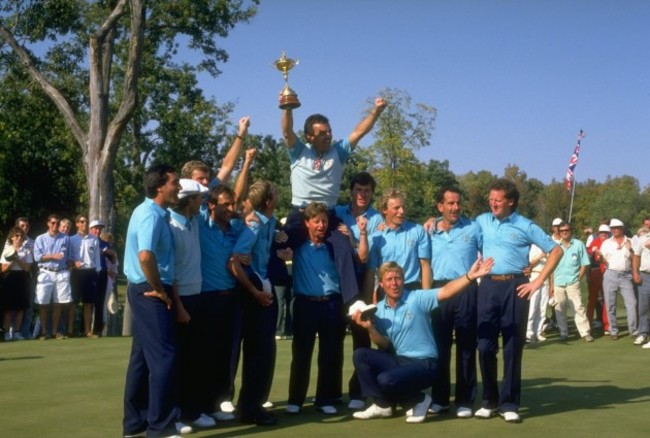
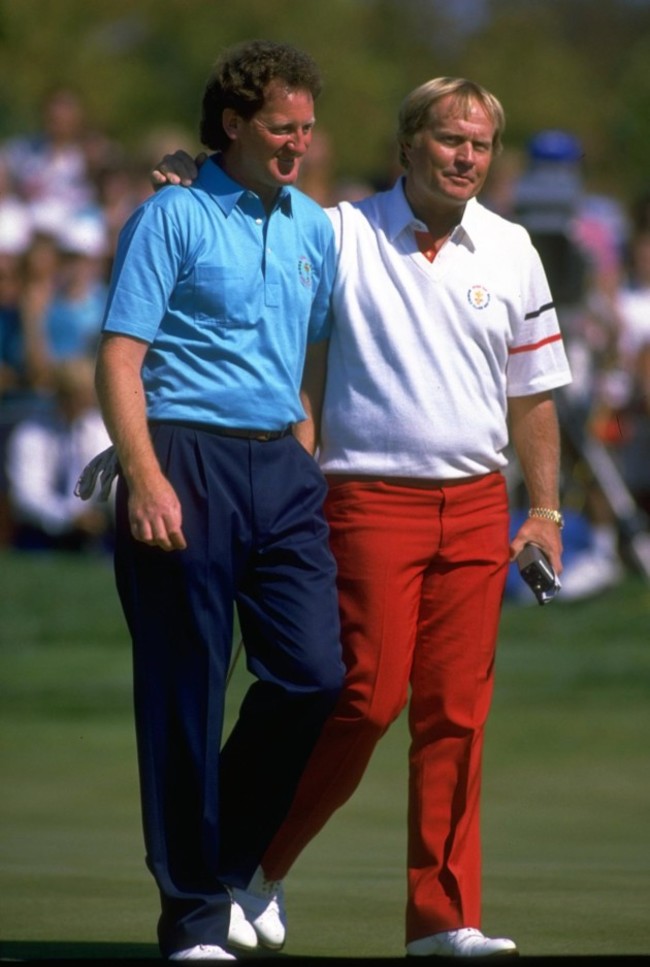

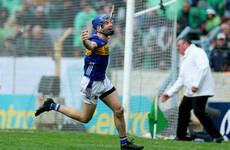
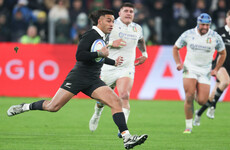

We’ve all had that put.Just a bare little nudge and watched it turn into a derailed intercity through portarlington sailing off the green to some ghastly bunker.But you nailed it under such pressure.Well done Sir.
Great story. Never knew this.
Eamonneen was young back then. Went to the old long putter didn’t he? Maybe should’ve watched that clip when lost confidence with the short stick. Some boyo
“Changed the Ryder Cup forever” ? Nah